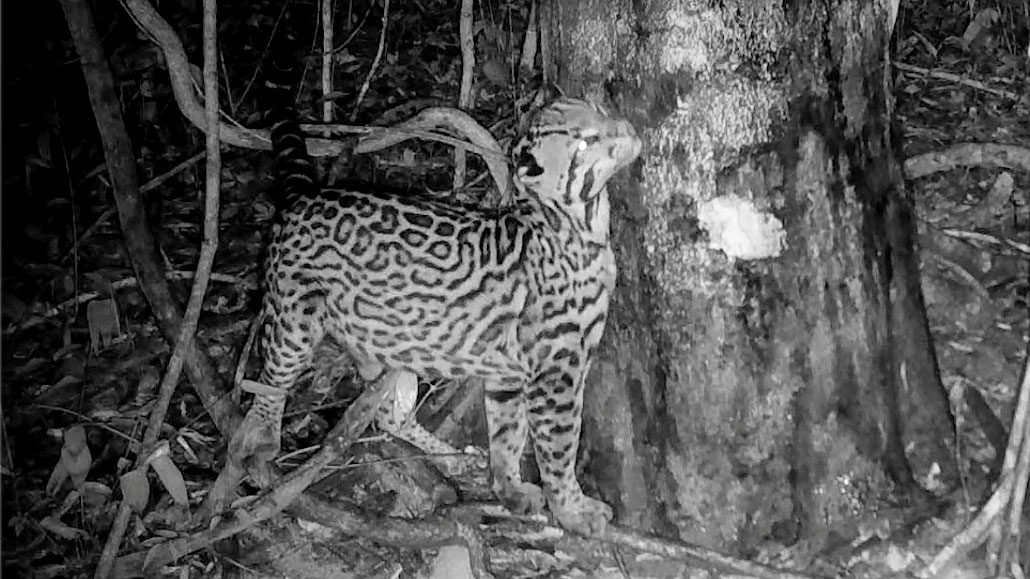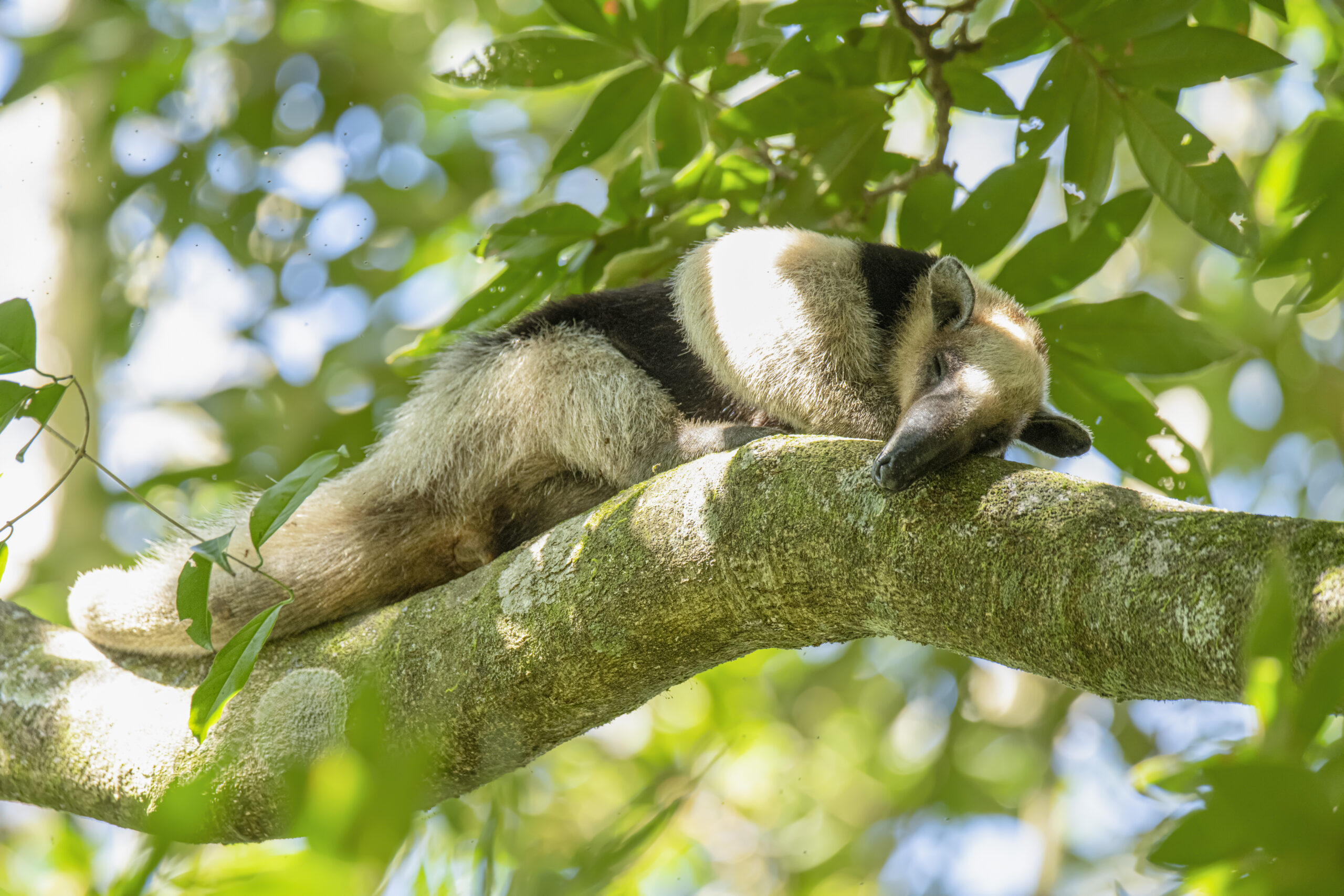Several mammals use a South American tree as their pharmacy
Scientists were surprised so many animals ‘doctor’ themselves with products from this tree

An ocelot, a type of wild cat from Central and South America, rubs its fur on the exposed sap of the cabreúva tree.
Olivier Kaisin
Share this:
- Share via email (Opens in new window) Email
- Click to share on Facebook (Opens in new window) Facebook
- Click to share on X (Opens in new window) X
- Click to share on Pinterest (Opens in new window) Pinterest
- Click to share on Reddit (Opens in new window) Reddit
- Share to Google Classroom (Opens in new window) Google Classroom
- Click to print (Opens in new window) Print
Not long ago, researchers in Brazil’s Atlantic Forest saw something strange. They had been following a group of black lion tamarins every day for weeks. Small and agile, these endangered New World monkeys sport a long black mane and golden rump. And one day, recalls researcher Olivier Kaisin, “We witnessed them rubbing [against] a tree trunk.”
Soon, Kaisin’s team would get data showing that a host of other species do this, too. It appears the animals are using the tree’s sap as a medicine.
Kaisin works for the University of Liège in Belgium. He also works in partnership with São Paulo State University in Rio Claro, Brazil. At first, his team thought the tamarins were marking their territory — applying their scent to warn other animals away. But as they watched longer, they realized the monkeys were doing something different.
“The whole group was rubbing simultaneously on the trunk,” says Kaisin. But they only did it “in a specific area, where we saw there was resin.” Resin is another word for sap — that sticky, smelly goop that sometimes exudes from cracks in tree bark.
When the researchers returned to the rural home where they were spending the night, Kaisin told the family there about the tamarins’ behavior at the tree. The tree’s scent had been extremely pungent.
Its smell “reminds me of honey,” says Felipe Bufalo, a researcher on the São Paulo State team. “The first moment I smelled it,” he recalls, “I thought it was some beehives. And I was scared.”
From that smell, the older woman in the household identified the tree as the cabreúva. She told the researchers that local Brazilians and Indigenous people use it both for perfume and medicine. “We thought, this is something special,” says Kaisin. His team reasoned that the tamarins, too, “may be using the tree for some type of treatment or self-medication.”
To learn more, they set up motion-activated cameras on some cabreúva trees. Scientists refer to these as camera “traps.” “When an animal is going to pass in front of the camera…[it will] start running and record a video,” explains Kaisin.
Those cameras turned up quite a surprise.

Seven additional species visited cabreúvas to rub against the resin. These included the ocelot (a wild cat), the coati (a mammal related to raccoons) and brocket deer. The big surprise: So did the tayra (a type of big weasel), the pig-like collared peccary, the northern tamandua (an anteater) and the neotropical fruit bat. No scientist had observed this type of rubbing behavior before in those last four species.
Scientists knew that tamarins sometimes used plants to doctor themselves. But now there was evidence the tayra, peccary, tamandua and fruit bat do as well. “Discovering such [new] things in mammals — which are extremely well-studied — is really interesting,” Kaisin says.
His team shared its new findings in the May issue of Biotropica.
Why this matters
Animals’ use of plants or other materials to combat diseases or parasites has a special name. It’s a long one: zoopharmacognosy (ZOH-uh-far-muh-COG-nuh-see). Not only is this practice interesting, but it’s also important.
“By watching what other animals do, we might speed up our own drug-discovery,” says Mark Hunter. He’s a retired ecologist. He used to work at the University of Michigan in Ann Arbor.
Most mammals host parasites, and nearly all the time, he says. Many chemicals in plants can combat those parasites. Studying animals that self-medicate could help identify better ways to protect wildlife. For instance, to safeguard the health of endangered animals, Hunter says society needs to also protect the medicinal plants in their environment.
Multiple species eat cabreúva sap or rub it on their fur. This is a strong clue that at least some are using the tree for medicine. But it will take more research to confirm that. Scientists will need to look for druglike traits of the cabreúva sap. For instance, does it kill the microbes, fungi or parasites that infect forest animals? Kaisin’s team would like to check this out. But such work has been on hold during the COVID-19 pandemic.
“The cabreúva is an example of how the conservation of forests, even in fragments, can be so valuable,” Bufalo says.







